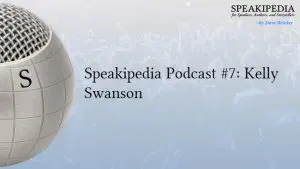 What is true self-publishing? What is the difference between self-publishing and “vanity publishing” or “subsidy publishing?” How do these differ from “traditional publishing?” Don’t publish until you understand these terms; that knowledge can make or break your book. Learn about publishing paths and pitfalls before stacking the odds and balance sheets against yourself.
What is true self-publishing? What is the difference between self-publishing and “vanity publishing” or “subsidy publishing?” How do these differ from “traditional publishing?” Don’t publish until you understand these terms; that knowledge can make or break your book. Learn about publishing paths and pitfalls before stacking the odds and balance sheets against yourself.
Traditional publishers—the folks who invented the publishing game—are book investors; they purchase manuscripts and rights, pay advances and royalties, and assume risk in exchange for hoped-for profits. Their model provides a good working definition; a “publisher” is a person who takes a risk on a book.
Who’s taking the risk? Who pockets the profits? Who owns the ISBN (International Standard Book Number)? These questions shed light on potentially expensive differences between publishing strategies.
Subsidy Publishing
Also called “vanity presses,” subsidy publishers offer production services like editing and cover design that make them attractive to writers who want “one-stop shopping.” For a fee, you can have your rough manuscript turned into a book and made available through major book distribution channels. Basically, you pay someone to be your publisher (hence the term “subsidy publishing”). The bait and switch happens when your book becomes part of the “publisher’s” catalog. Subsidy publishers assign your book an ISBN number that belongs to them; they become the publisher of record which entitles them to receive an additional royalty whenever a book sells. Charging for editing, design, and production services is perfectly acceptable, but charging an additional publisher’s royalty is unethical unless they’ve taken some risk. Also, the publisher sets the book’s retail price so don’t be surprised if your book is priced higher than you’d like it to be.
Read the small print. Authors are often reassured by language in subsidy publishers’ paperwork that allows them to cancel their contracts at any time, but in most cases, the cover design, typesetting, and ISBN number remain the property of the “publisher.” Even though these assets were paid for by the author, the digital files needed to reproduce the cover and bookblock are not made available. In other words, changing horses means you get to start over from scratch with a word processor file.
If you’re a grandmother who wants to distribute twelve copies of your memoir to family members, subsidy publishing may be a great way to get a finished, “pretty good” book without having to learn about publishing or marketing. If you want to publish, distribute, and offer books for sale, paying someone to be your publisher is like paying someone to take a vacation for you so you can get more work done.
Risk/Profit/ISBN: With subsidy publishing, the author takes the risk and then pays the publisher! This is the exact opposite of how the publishing ecosystem is supposed to work. Vanity presses are the #1 trap for new authors. The only claim they have to being your publisher is based on ownership of the ISBN they slipped into your “publishing” package to “make things easier.”
Traditional Publishing
Traditional publishers are shrewd risk-takers. They buy and sell intellectual property the way market traders buy and sell stocks. Though many of their books flop, they count on longstanding favorites, already-popular authors, celebrity titles, licensing deals with Hollywood and occasional blockbuster hits to offset their losses. As investors, their size empowers them to leverage one of the oldest and most fundamental of business principles—diversify your holdings. A serious publisher pays writers an up-front advance against royalties and then gambles they’ll sell enough copies of a book to make a profit. Consider the costs of maintaining a full-time staff of quality editing, design, typesetting and printing resources. It’s no wonder traditional publishers are extremely picky about which books they’ll take on. It’s only fair that trade publishers take a majority share of the profit when a book sells.
Risk/Profit/ISBN: This is the model for how publishing should work. The publisher takes the risk. The publisher pays the author. The publisher owns the ISBN because they paid for the rights to publish your book.
POD Publishing
Though you’ll often hear the term “POD publishing,” there’s no such thing. POD stands for “Print On Demand,” not “Publish on Demand.” Don’t allow well-meaning advisers to steer you clear of the very miracle that has empowered the self-publishing revolution. POD is simply a printing technology; instead of having to manufacture hundreds or thousands of books at a time, POD allows you to affordably produce single books to order. Without POD, your garage would be filled to the rafters with boxed copies of your book; those days are over. Many vanity presses do rely on POD printers for production, but don’t let this bias you against the technology.
True Self-Publishing
True self-publishers own all their rights and receive 100% of the profit. They own their own ISBN numbers and have access to all the digital files associated with the production of their work. Their imprints are displayed on their books’ spines and title pages.
Self-publishing is difficult. The writer is tasked with finding qualified editing and design resources, handling administrative chores like ISBN and copyright registration, managing the production of the book, choosing print and distribution partners, and marketing the finished product. However, this path offers control over both creative aspects of the work and business strategy. Authors who wish to produce literary art that’s unfettered by the demands of popular genres, and authors who have ready access to niche audiences may find opportunities in smaller-scale publishing that large publishers won’t. Selling a few thousand books represents a disaster to a big publisher while that’s usually enough volume for a small publisher to realize a profit—both from book sales and from speaking and consulting opportunities that come from having “written the book on the subject.”
Risk/Return/ISBN: The conceptual lines blur when the author also happens to be the publisher, but think of the writer as an individual and think of the publisher as a corporation that individual happens to own stock in. Though self-publishers are unlikely to pay themselves an advance, the publisher “accepts the manuscript,” produces it, markets it, and deducts expenses (printing, shipping, seller commissions, etc.)—just like the big players do. The publisher assumes a higher risk by banking on a catalog that may only contain a single book, but the profits—actually a greater percentage of profits than with traditional publishing—ultimately go to the writer. In true self-publishing, the ISBN number may belong to the author or to the author’s imprint; it certainly does not belong to a third party.
Conclusion
If you want to sell books, don’t sabotage your pricing and profits by using a vanity press. If you don’t want to get involved with production, marketing, distribution, and other aspects of bookselling, shop your book to agents, hire a reputable production service or hire a book coach to guide you through the process. Above all, do everything you can to ensure your book is excellent from cover to cover. When it comes to editing, cover design and typesetting, take the “self” out of self-publishing and work with the best resources you can afford. If you do self-publish, buy your own ISBN numbers and keep track of the digital assets used to produce your books.
There’s no one “right way” to publish. Do your homework before releasing your book. Understand the benefits and liabilities of each approach. When the time comes to evaluate business relationships, ask who’s taking the risk and who’s making the money?





